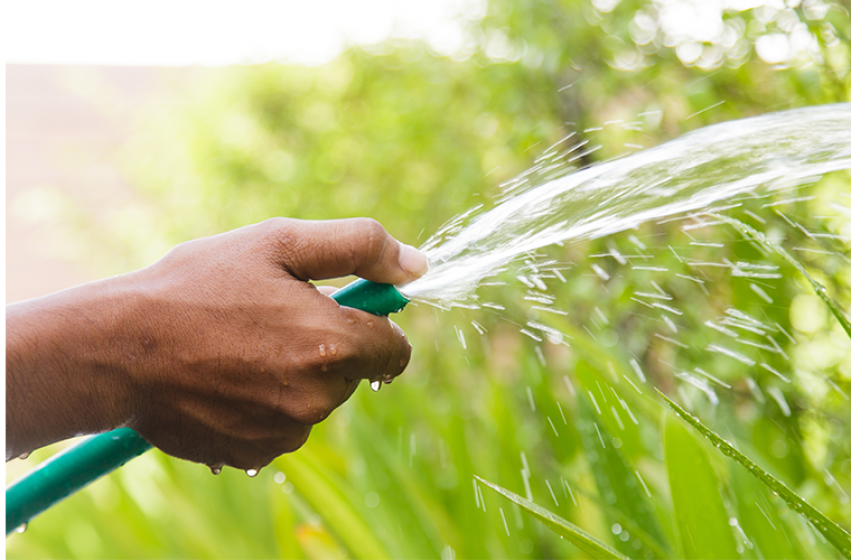Written by McDonald Garden Center Founder, Eddie Anderson
McDonald Garden Center founder Eddie Anderson has always had a passion for plants, especially houseplants and tropical plants. Eddie is still involved in houseplant buying as well as offering strategies on merchandising and selling to the McDonald Garden Center stores and Garden Markets.
With a degree in Horticulture from Virginia Tech, he remains highly active in the gardening community and continues with industry affiliations and new product development. He continues to inspire our young gardeners as a Club Volunteer Leader for the 4-H Club, “Guardians of the Planet, in Virginia Beach.
Here's what Eddie had to say about the recent lack of quality rainfall in Hampton Roads:
The recent high temperatures and the lack of meaningful rainfall have created very dry conditions in my garden. I am having to water this year’s plantings every two to three days to keep from suffering significant loss of plant quality. While more established plant material can often weather varied precipitation, new plantings require more specialized attention. The majority of the problems associated with new plant material can be attributed to improper watering. The most critical time for a newly installed landscape is the first two to eighteen months.
Here’s what to look for and how to properly water during dry conditions:
Plant Stress Indicators.
- Wilted foliage. Caution, not all plant wilt before they die. Look for other symptoms as well.
- Change in foliage color. Often the leaves take on a gray cast when very dry.
- Unusual amount of yellow leaves.
- Fruit drops before mature.
- Margins of the leaves turning brown and crisp.
- Stems shrinking.
Evaluate the Soil
- Use a moisture meter to probe the soil. The reading will indicate the amount of moisture in the soil and the need for water. This handy device is useful for container gardens and houseplants as well as in the garden. It is like having a garden coach at your side all of the time.
- Soil that is dry to the touch to a depth of 1-inch. Not as accurate as the moisture meter, but once you learn to combine with other factors, it can help you decide to water.
- Cracks developing in the soil tell a tale. When the soil dries out, it shrinks, causing it to pull away from the edge of containers or pull apart in the ground. When this happens, it is really very dry.
Proper Watering is a Key to Getting Through This Period.
- Place a hose at the base of the plant and let it run on a slow trickle for 15-30 minutes.
- Use a Dramm water breaker on the hose for watering smaller plants. The breaker allows a full flow of water without washing the plant out of the ground.
- When the soil is very dry, it is hard to re-wet. Water the soil to the point of runoff. Then move on to another area. Return in 5 minutes and wet to runoff again. Repeat this a third time. Want to be sure you did the job correctly? Using a trowel, dig down to insure the soil is wet to a depth of 6-inch.
- For large areas, a soaker hose is the best. Sprinklers that spray in the air lose a lot of water to evaporation.
- For large beds, a lawn sprinkler may be the best answer. There are many types for various shapes and size areas. Use a rain gage to measure the amount of water applied to ensure you have applied an inch of water over the area. Time the process so you know how long to run the sprinkler in the future.
To view our video on "Watering, Tips, Tricks and Tools" click here.

